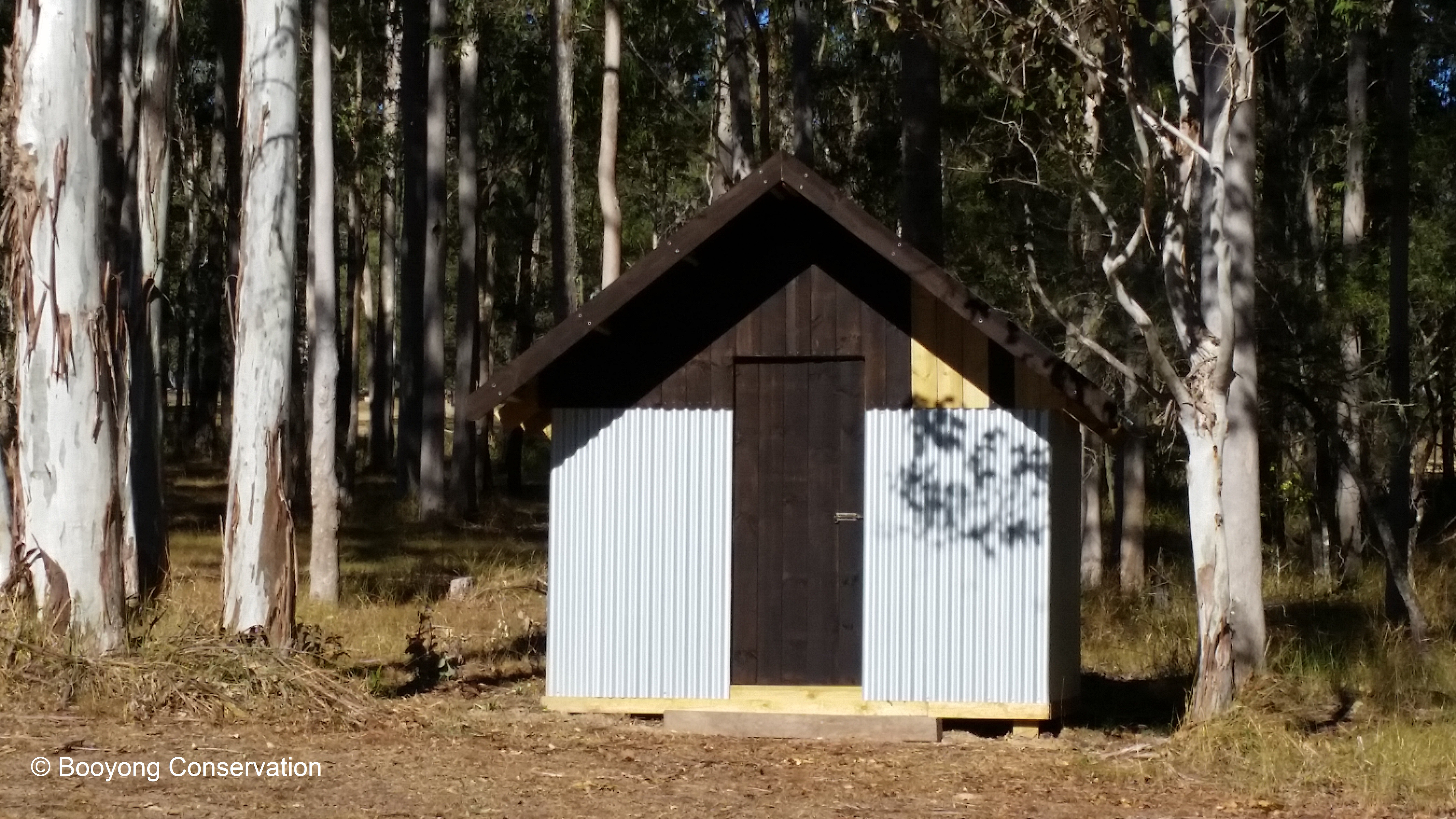So happy to see the firewood shed complete and ready to go! It’s been a long time coming, but Bob has done a great job – it’s large and airy, and nice and close to the cabin. I’m most excited to be able to create a garden of succulents around it.
What wood burns best?
Dry wood burns better as a high moisture content is difficult to light and will produce more smoke,  which can be problematic in chimneys and flues. At Booyong we’ve been chopping wood and cutting it with the log splitter for some time in preparation for the firewood shed. Freshly cut wood from living trees has a moisture content of around 50% and logs may take 1 or 2 summers to air dry to a desired 10-15% moisture. It also helps to cut it in smaller pieces as we have done. You can cut fresh wood and store it somewhere over the summe
which can be problematic in chimneys and flues. At Booyong we’ve been chopping wood and cutting it with the log splitter for some time in preparation for the firewood shed. Freshly cut wood from living trees has a moisture content of around 50% and logs may take 1 or 2 summers to air dry to a desired 10-15% moisture. It also helps to cut it in smaller pieces as we have done. You can cut fresh wood and store it somewhere over the summe r to dry – preferably off the ground and with good air flow. Shelter from rain will speed drying, but ventilation is the most important factor.
r to dry – preferably off the ground and with good air flow. Shelter from rain will speed drying, but ventilation is the most important factor.
I love our firewood shed but am concerned that the roof ventilation will not be enough to help the wood dry out to the desired moisture content. We will have to ensure that it is well and truly dry before we store it away.
What wood to burn?
Since having the fire, we have discovered that different wood will  burn differently and produce a variant of heat intensity and amount of smoke. Ironbark is one of the best burning woods and most suited to combustion & open fireplaces, and Red gum and Box also burn well. Hard and dense eucalypt timbers generally provide better fuel for the volume of wood, and last longer when burning. Never burn treated or painted wood as the fumes and ash may be toxic.
burn differently and produce a variant of heat intensity and amount of smoke. Ironbark is one of the best burning woods and most suited to combustion & open fireplaces, and Red gum and Box also burn well. Hard and dense eucalypt timbers generally provide better fuel for the volume of wood, and last longer when burning. Never burn treated or painted wood as the fumes and ash may be toxic.
At Booyong, Brett and I are working towards sustainability and preparing for our future retirement. According to the Australian Forest Growers, households using firewood as a primary fuel use on average around 6m3 of firewood per year.
We will rely on firewood for our heating needs and the benefits we expect will include sustainability, saving money, and reducing greenhouse gasses by providing a sustainable alternative to fossil fuels. Furthermore, growing trees for firewood will increase carbon storage, maintain habitat for wildlife, and improve soil and water management on the property.
According to the Australian Forest Growers Grey Box (E. macrocarpa), White Box (E. albens) Red Ironbark (E. tricarpa) Yellow Box (E. melliodora) Sugar Gum (E. cladocalyx), Red Box (E. polyanthemos), Yellow Gum (E leucoxylon), Red Gum E. blakleyi) Spotted Gum E.maculata, Blue Gum, E. globulus), River Red Gum (E. camaldulensis), Red Stringybark (E. macrorhyncha) and Manna Gum are all good native firewood varieties. Trees usually take more than 10 years to develop enough density for quality firewood and it is recommended to select a variety of species with different stored energy values, growth rates, and pest/disease resistance.
At Booyong we intend to plant a tree as it falls and we use if for firewood, we will only remove firewood from the area’s that are not under conservation and hollow logs will not be removed from the area as they provide a safe haven for native wildlife.
Slow Combustion vs Open Fire
Closed-combu stion fireplaces are extremely efficient, whereas a traditional open fire will only convert around 20% of its fuel into usable heat. The remaining fuel turns into ash, smoke and hot air which escapes through the chimney and is of little use.
stion fireplaces are extremely efficient, whereas a traditional open fire will only convert around 20% of its fuel into usable heat. The remaining fuel turns into ash, smoke and hot air which escapes through the chimney and is of little use.
Closed system fires also reduce the amount of smoke in your home and are generally much safer, although a fire screen is strongly recommended for all fireplaces.
Permit required
Should you wish to collect firewood for personal use from a state forest within NSW, you’ll need to apply for a permit and can do so online at the Forestry Corporation. They are only valid for a short period of time and are generally restricted for small quantities in specific areas; and due to the fire risk, permits for firewood collection are not available in some areas. Some of the basic guidelines are as followed:
• You may ONLY take fallen timber.
• You may only collect firewood from the area shown on the map attached to your permit.
• Only firewood on the ground may be collected.
• Only use a chainsaw if you are competent and ensure you wear appropriate clothing and safety equipment

You must be logged in to post a comment.